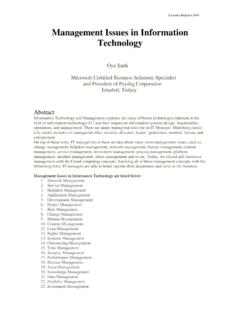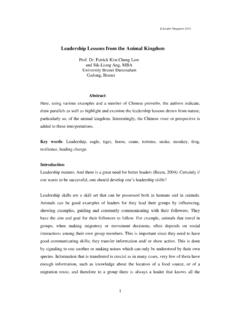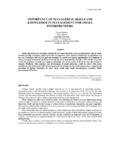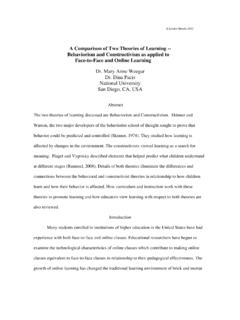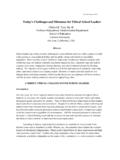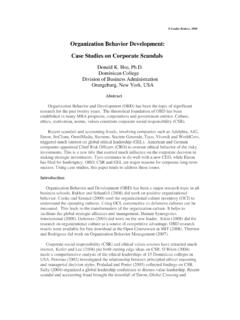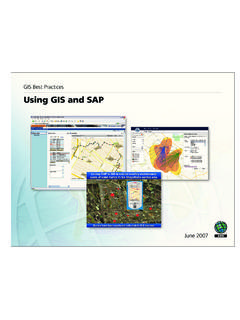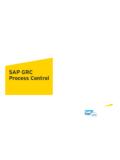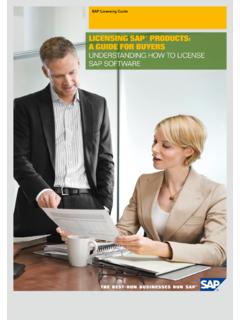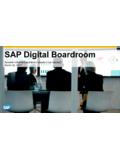Transcription of Gregus Strategic Information Management - CASA …
1 1 E-Leader, Slovakia 2006 Strategic Information Management Michal Gregus and Eleonora Benova Faculty of Management Comenius University Bratislava, Slovak republic and Abstract In this paper on an example of a standard company we identify a Strategic Information system (IS) issues in an organization. We critically analyze and critically evaluate the organization s practice to solve the problems connected with the implementing Strategic Information systems. We try to discuss the wider organizational implications of the steps taken by the organization in the use of IS and their consequences.
2 Introduction In this paper we will consider a company in Slovakia, with above average industry performance. Geographic accessibility of the company s major markets in WE and CEE, together with low cost operations, represent the major competitive advantages of the firm. Declining markets, existing production, overcapacity in Europe, and increased imports from Asian low cost countries intensify competition and enhance further industry consolidation. The company has a long-term history of local big successful enterprise operating in a mature industry and stable CEE environment, with all implications on organizational structures, systems, company culture, processes, leadership and peoples mindset.
3 After privatization of the company in mid 1990 s, international company took-over Management control (50% shareholder). The company became Strategic business unit (SBU) of the multinational enterprise (MNE). The integration of the company into MNE structures triggered massive restructuring and downsizing processes within this SBU and implied cultural clashes. On the other hand the integration created the opportunity to utilize the synergies from common distribution channels, procurement and production planning. Core thesis Lack of the company s emphasis on Information systems integration with customers and suppliers, and the resulting poor/inefficient Information and Information exchanges within the value system, represents the major missed opportunity for value creation and was one of the underlying reasons for company s takeover.
4 The company s over reliance on internal value chain optimization as a source of competitive advantage has proved to be an unsustainable source of competitive advantage. Business Strategy The company s competitive strategy can be characterized as a hybrid strategy (Johnson and Scholes 2002), where the low cost base (cost leadership), reinvested in low price, is merged with differentiation based on quality, reliability, flexibility, innovation and sustainable value creation for all key stakeholders. The company s current business strategy can be characterized as a turnover strategy (Gerstein 1983) that followed the company s take-over and subsequent integration of this SBU into MNE structures.
5 The turnaround strategy has not been driven by poor financial performance (SBU has enjoyed sound financial performance), but rather by the desire of new shareholders to increase productivity and to change organizational culture and structure, which are necessary measures asserting sustainable competitive advantage of a low cost, lean and entrepreneurial enterprise. Despite the Management rhetoric (Carter and Jackson 2004) expressed in MNE s business strategy, in reality the cost cutting and strong centralization are dominant in SBU, in the context of a mature industry, severe price competition and the SBU s background. This paper examines the alignment of IS and business strategy and the contribution of IS practices towards business objectives.
6 2 E-Leader, Slovakia 2006 IS strategy From Strategic point of view the issue is the extent to which the improvements in Information processing capability can improve and assist the way in which knowledge is created and shared both within and around an organization (Johnson and Scholes 2004). The competitive pressures have resulted in the takeover of company by MNE. The company, as a SBU of a large multinational enterprise is in a position of Implementor (Gupta 1991 see Figure 1) and its IS strategy making process could be plotted on Whittington model (2001) as classical (Grant 2002), where over reliance on higher-level strategies (from MNE) is apparent.
7 The company is forced to accept systems from other units (located in Austria) for largely economic (or even political) reasons, without recognition of their differing business situations and organizational competencies (Ward and Pappard 2004). The resulting application portfolio of the company is shown in Figure 2, with focus on Key operational and Support systems. The Strategic IS are designed centrally and rolled over to the SBU, so that the approach to corporate Strategic Information system planning could be identified as an incremental one (Salmela and Spil 2002). Overall IS strategy focuses on the integration of existing IS within SBU s, as well as external integration with wider value chain partners (SCM) with the aim of supporting both the cost leadership and differentiation strategy.
8 Analysis of IS procedures and practices Porter and Miller (1985) assert that Management of Information systems can no longer be the sole province of the EDP function such as accounting and record keeping, focused on cost control and reduction. The use of advanced Information systems in value chain activities allows companies to enhance competitive differentiation as well as attain cost leadership and consequently gain sustainable competitive advantage. In other words, the ability to pursue cost reduction and differentiation simultaneously should be a criterion for IS utilization. Earl (1998) asserts that IS must have the potential to be a Strategic weapon in at least one of the following: (1) gaining competitive advantage; (2) improving productivity and performance; (3) enabling new ways of managing and organizing; (4) developing new businesses.
9 These views suggest that the utilization of IS in Strategic and managerial activities is more important than their use in operational contexts (Soo 2002). The following part of this paper analyzes and critically evaluates the company s practice in addressing the issue of low internal and external integration of its Information systems and its negative impact on upstream and downstream value creation. Internal value creation The company has consistently tried to enhance its business efficiency and effectiveness by reassessing its internal business operations such as purchasing, warehousing, materials Management and distribution. This has involved using techniques such as Manufacturing Resource Planning (MRPII) and Just-In-Time (JIT) to improve internal value chain effectiveness and efficiency.
10 The company has implemented its major ERP system (SAP R3) in early 1990 s (comprising FI, CO, HR, MM, SD and other modules). The company achieved relatively high internal integration of the processes within the company s value chain towards the end of 1990 s. However, after takeover by MNE, many non-integrated applications were implemented replacing SAP s existing functionalities ( for sales, Cost controlling, etc.), as the parent enterprise had implemented SAP only to a limited extent. The situation for the company represents a step back in their internal integration efforts for sake of uniformity of the group IS. The major barrier towards full internal integration of the company s Information systems therefore represents the variety of applications used for different processes.
